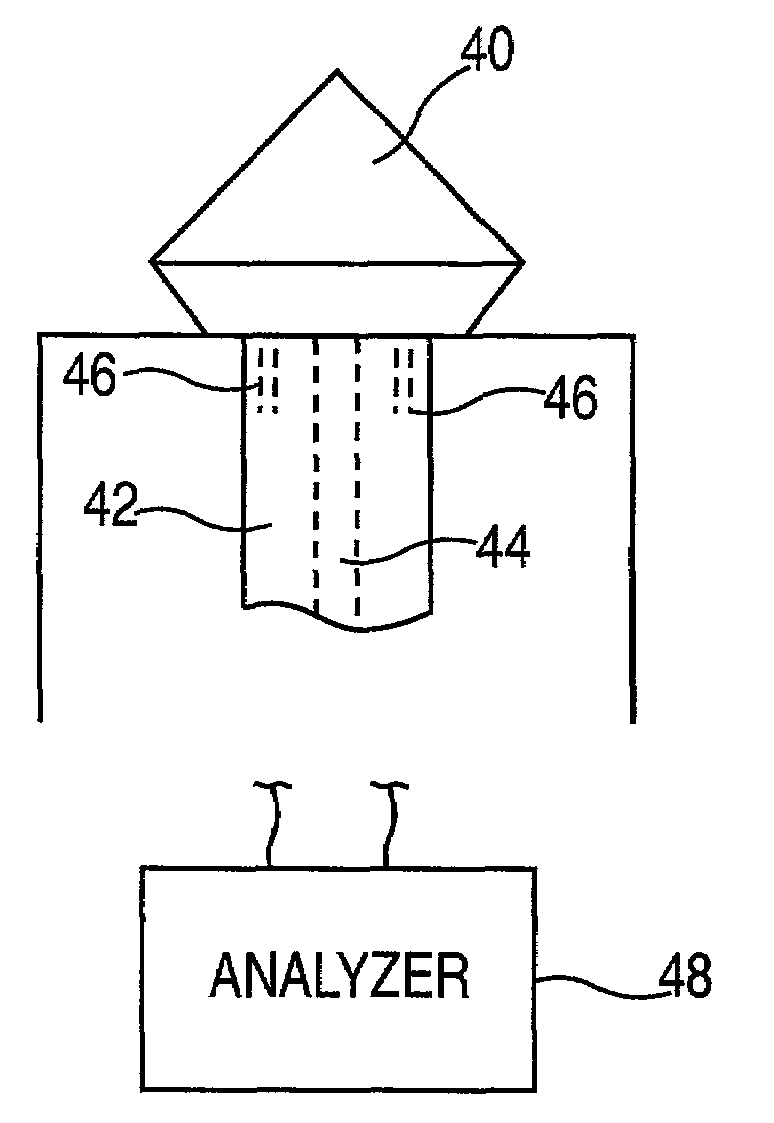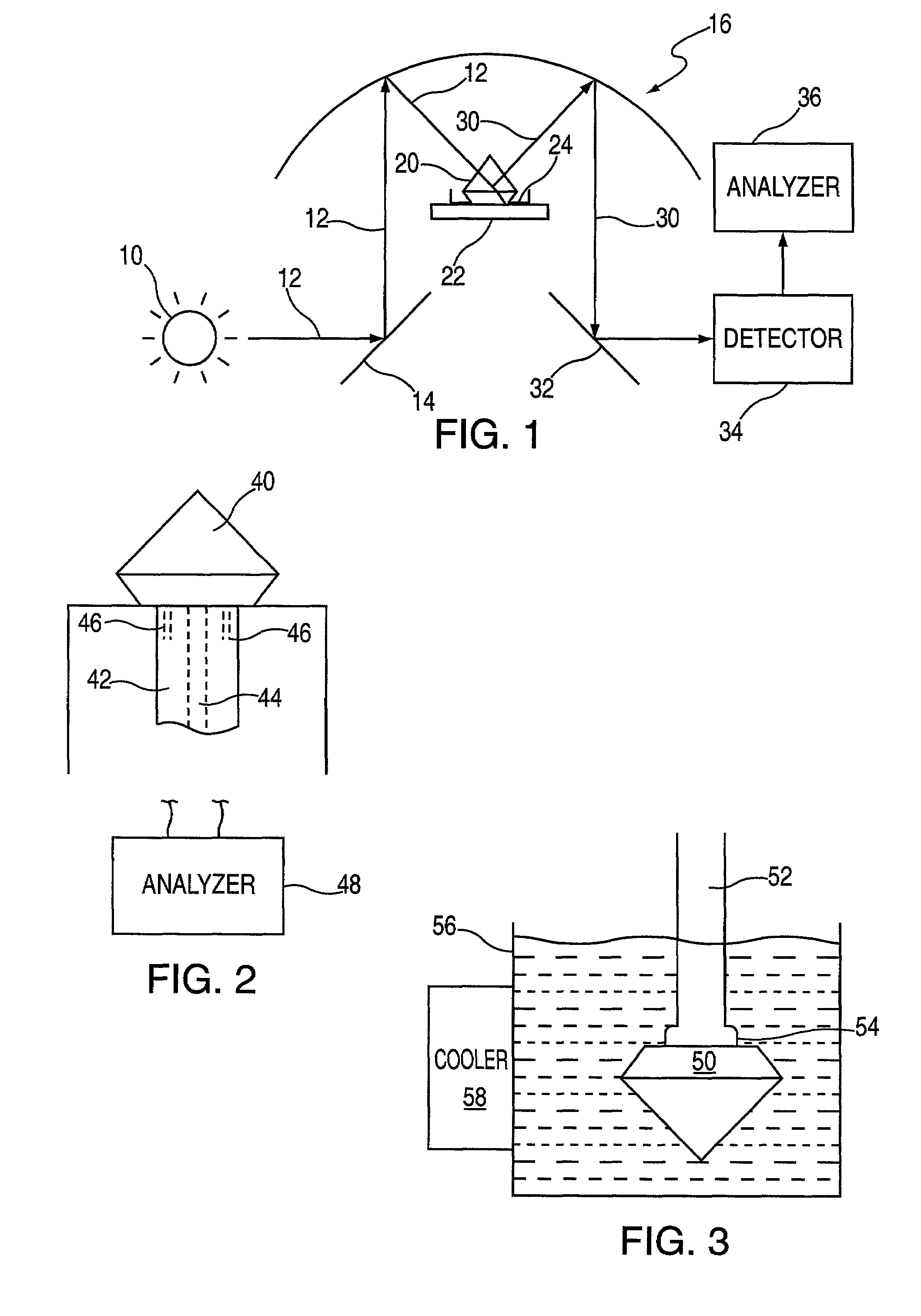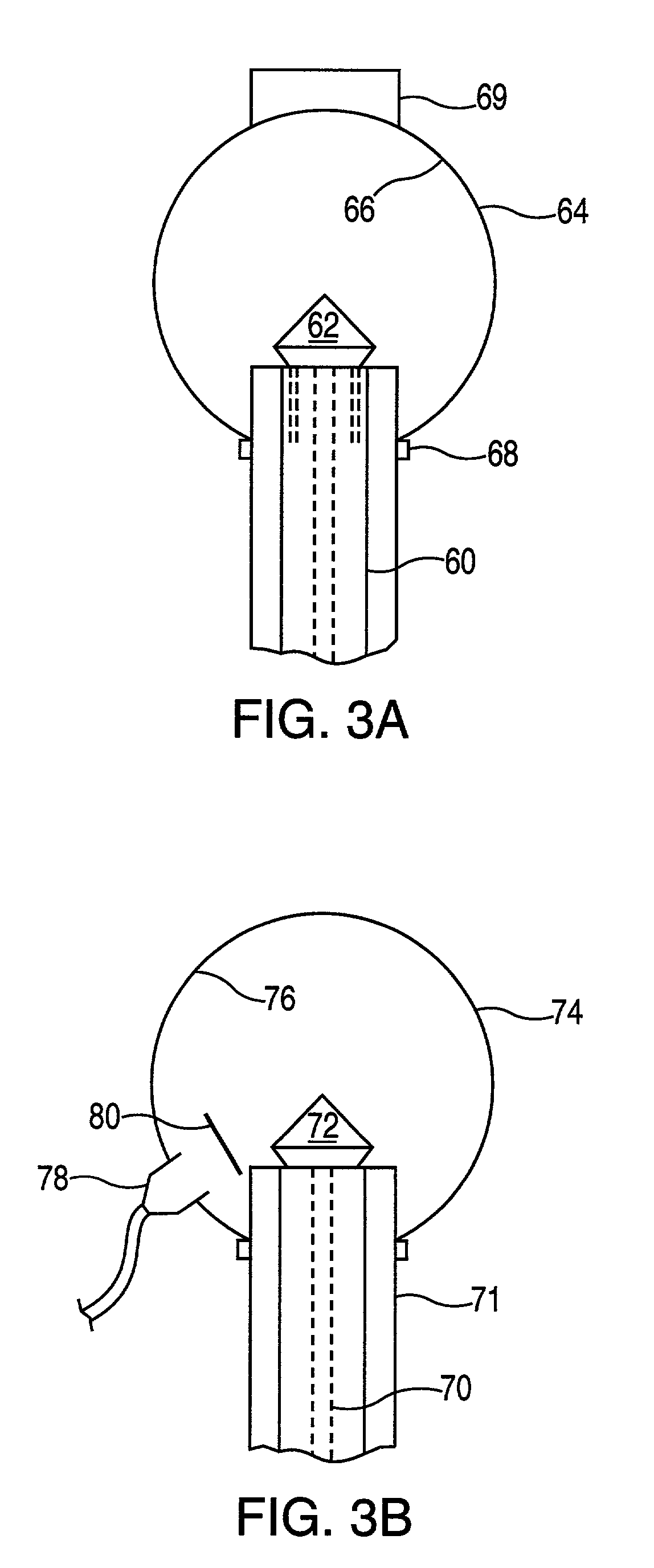Characterization of clarity and color enhancement agents in gems
a color enhancement agent and clarity technology, applied in the field of gems, can solve the problems of non-standard analytical challenge, inability to manipulate or destructively alter the sample to accommodate the sample holding device, etc., and achieve the effect of effective detection of organic chemical compounds in gems
- Summary
- Abstract
- Description
- Claims
- Application Information
AI Technical Summary
Benefits of technology
Problems solved by technology
Method used
Image
Examples
example 1
[0075]This example illustrates using near infrared (NIR) and a probe to detect the presence of epoxy in an emerald. Two emeralds were analyzed, one contained a small amount of epoxy, the other contained no epoxy. Both gems were approximately 5 mm in diameter.
[0076]As indicated in FIG. 4, a pure epoxy sample has a strong absorption, around 1700 nm. Peaks appeared at approximately 1648, 1670, 1698 nm (see FIG. 5) and correspond to first overtone absorptions of C-H anticipated for epoxy (and not anticipated for emerald).
[0077]Absorbance spectra of the two emeralds are shown in FIG. 6. Although there are some differences (baseline and peak shape), no significant differences are seen at this scale in the region associated with strong epoxy absorbance.
[0078]In order to verify the presence or absence of epoxy in the spectra of the emeralds, two different mathematical treatments were evaluated. The first was a detrend treatment that consisted of a first order detrend correction (determine t...
example 2
[0088]This example illustrates using NIR diffuse reflective spectroscopy and a probe to detect the presence of epoxy in turquoise.
[0089]Turquoise beads were analyzed, one epoxy treated and one untreated. Both were tested according to Example 1 above. FIG. 11 illustrates epoxy spectra a, treated turquoise (turquois treated with epoxy) spectra b, and untreated turquoise spectra c.
[0090]FIG. 12 illustrates the second derivation spectra between 1580 and 1780 nm (where the C-H stretching overtones occur) for both the treated and untreated turquoise.
[0091]These tests were run in accordance with the procedure and equipment of Example 1 above.
[0092]As can be seen, the presence of the epoxy is detected.
example 3
[0093]This example illustrates using NIR diffuse reflectance spectroscopy and a probe to detect the presence of epoxy in emeralds, different than the sample used in Example 1 above.
[0094]Two emeralds were analyzed, one epoxy treated and one untreated. Both were tested according to Example 1 above.
[0095]FIG. 13 illustrates treated emerald spectra A, and untreated emerald spectra B.
[0096]FIG. 14 illustrates the second derivation spectra between 1600 and 1750 nm (where the C-H stretching overtones occur) for both the untreated a and treated emeralds b.
[0097]These tests were run in accordance with the procedure and equipment of Example 1 above.
PUM
 Login to View More
Login to View More Abstract
Description
Claims
Application Information
 Login to View More
Login to View More - R&D
- Intellectual Property
- Life Sciences
- Materials
- Tech Scout
- Unparalleled Data Quality
- Higher Quality Content
- 60% Fewer Hallucinations
Browse by: Latest US Patents, China's latest patents, Technical Efficacy Thesaurus, Application Domain, Technology Topic, Popular Technical Reports.
© 2025 PatSnap. All rights reserved.Legal|Privacy policy|Modern Slavery Act Transparency Statement|Sitemap|About US| Contact US: help@patsnap.com



